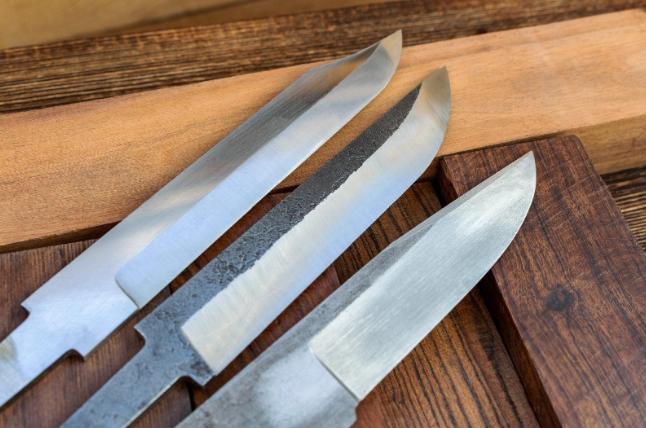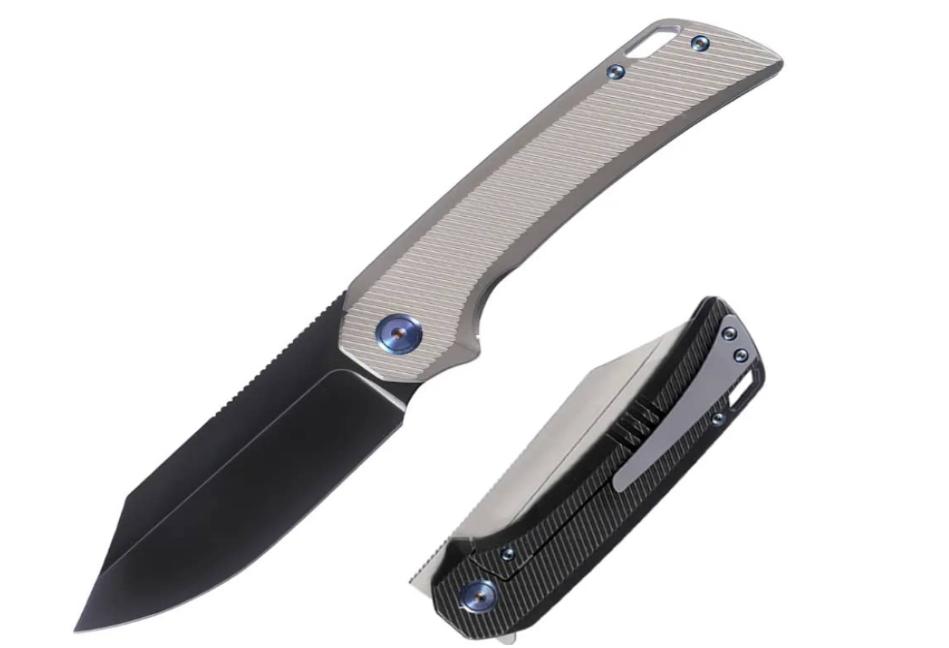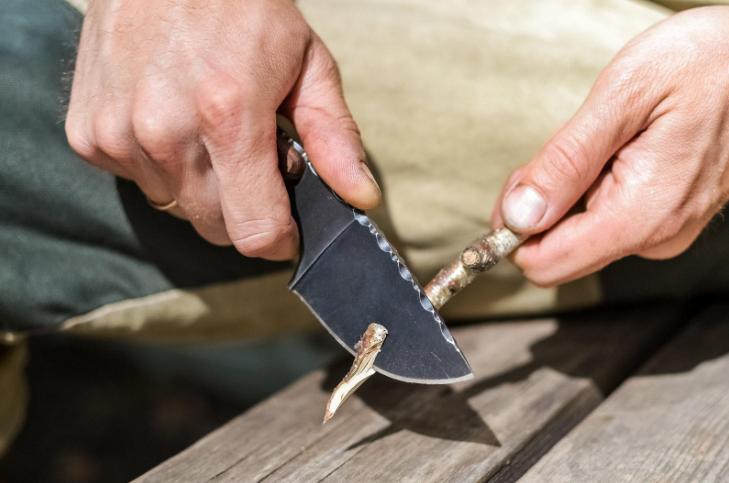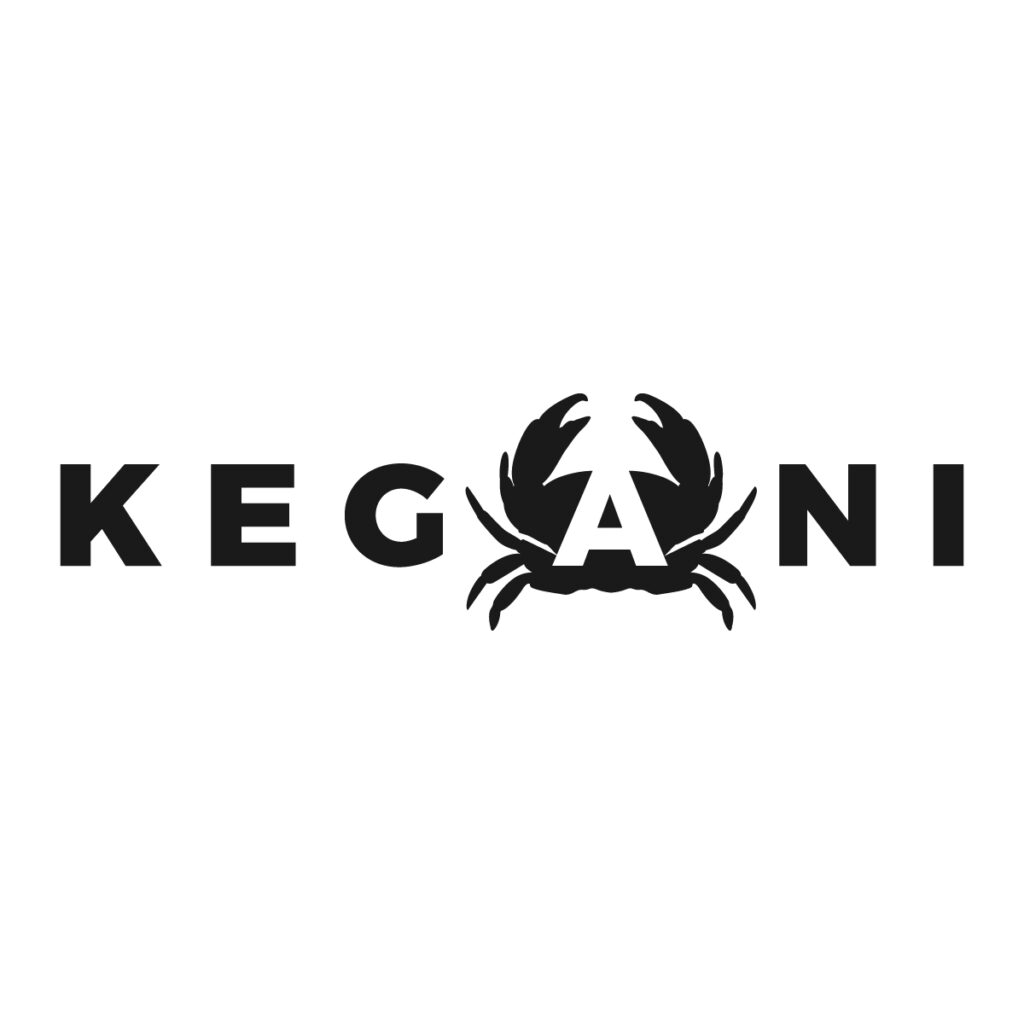Nitro-V and S35VN are top-tier knife steels, each with standout qualities.
Nitro-V offers excellent toughness and rust resistance, making it great for everyday use. S35VN shines in edge retention and durability, perfect for heavy-duty tasks.
Whether you’re a knife manufacturer, retailer, or end user, understanding which steel fits your purpose, environment, budget, and user preferences is more valuable than blindly chasing hardness or edge retention.
Let’s look at the key areas that make these steels different. After reading, you’ll know exactly which steel fits your types of knives.
Steel overview

Nitro-V
A modern stainless steel, Nitro-V is an enhanced version of AEB-L, developed by New Jersey Steel Baron and Buderus Steel. With 13% chromium and 0.11% nitrogen, it delivers excellent corrosion resistance and toughness.
S35VN
S35VN, or CPM S35VN, is a premium stainless steel developed in 2009 by Crucible Industries and Chris Reeve as an upgrade to S30V. Its higher vanadium and niobium content improves toughness while preserving wear resistance and edge sharpness, thanks to the precise Crucible Powder Metallurgy (CPM) process.
Steel composition: Nitro-V vs S35VN
The main reason for performance differences is chemical makeup. Here’s a key breakdown of elements:
| Element | Nitro-V | S35VN | What It Does |
|---|---|---|---|
| Carbon (C) | 0.68-0.70% | 1.34% | Adds hardness and wear resistance. More carbon means better edge holding, but often lower toughness. |
| Chromium (Cr) | 13-14% | 14% | Gives corrosion resistance. 14% is enough to call it stainless steel. |
| Vanadium (V) | 0.05-0.10% | 3.00% | Helps make strong, wear-resistant carbides. More vanadium = better edge holding. |
| Niobium (Nb) | – | ~0.50% | Improves toughness and strength by refining grain structure. Common in powder steels. |
| Nitrogen (N) | 0.11% | – | Boosts pitting resistance and adds toughness in certain uses. |
| Molybdenum (Mo) | 0.50% | 2.00% | Enhances corrosion resistance, strength, and wear resistance by forming carbides. |
What This Means:
- S35VN has more carbon, vanadium, and niobium, forming larger carbides that make it harder and better at holding a sharp edge, but slightly less tough. This is why it’s great for heavy cutting but can chip under extreme stress. (learn more about why large carbides affect toughness here)
- Nitro-V’s lower alloy content and added nitrogen create smaller carbides, giving it better toughness to resist chipping and edge damage, ideal for daily use.
Start Working with a Professional Now
Performance comparison
| Performance | Nitro-V | S35VN |
|---|---|---|
| Corrosion Resistance | Excellent – ideal for wet or coastal locations | Good – may need more care in tough environments |
| Hardness (HRC) | 58–62 | 60–62 |
| Toughness | High – stands up to impact and chipping | Good – but not as tough as Nitro-V |
| Edge Retention | Medium to High – great for normal use | Very High – built for long tasks |
| Sharpening Ease | Easy – great for beginners | Harder – best with diamond stones and some skill |
1. Corrosion resistance
Nitro-V:
- Contains ~14% chromium, mostly free, forming a dense protective layer against rust.
- 0.11% nitrogen boosts pitting resistance—data shows nitrogen is 16x more effective than chromium against corrosion, especially in chloride-rich settings.
- Rarely rusts in humid or salty environments (e.g., kitchens, coastal areas), needing minimal maintenance.
S35VN:
- Has 14% chromium for good rust resistance, but some binds with carbon and vanadium, reducing “available” chromium.
- Solid performance but requires more frequent cleaning in high-humidity or saltwater conditions. Using a blade coating can enhance its corrosion resistance.
Nitro-V excels in corrosion resistance, ideal for wet or corrosive environments; S35VN is reliable but needs more care in harsh conditions.
2. Hardness & strength
Nitro-V:
- Reaches 58–62 HRC, varying with heat treatment, balancing edge retention and toughness.
- Suits various cutting tasks and can achieve a very sharp edge with proper heat treatment.
S35VN:
- Maintains 60–62 HRC due to high carbon and powder metallurgy, offering strong rigidity and decent toughness.
- Built for heavy-use scenarios requiring durability.
S35VN leads in hardness and strength, perfect for rigid, durable knives; Nitro-V offers balanced performance and user-friendliness.

3. Edge retention
Nitro-V:
- Matches 14C28N and 440C, ideal for light to moderate use.
- Low 0.15% vanadium forms fewer carbides, so edges wear faster but stay finely sharp. Personal Experience: In daily use, Nitro-V’s edge retention is close to 440C, with differences only clear in tests.
- Great for cutting cardboard or food but dulls faster under heavy use.
S35VN:
- 3% vanadium creates abundant hard carbides, lasting 1.5–2x longer than Nitro-V in tests.
- Excels in woodworking or hunting, needing less sharpening. Personal Experience: S35VN’s edge lasts noticeably longer than Nitro-V, and compared to D2, Nitro-V’s cutting time is about three-quarters as long but stays extremely sharp for half that time, making tasks effortless.
S35VN dominates in edge retention, ideal for tasks needing long-lasting sharpness.
4. Toughness
Nitro-V:
- Nitrogen-enhanced formula boosts impact resistance, resisting chipping or cracking.
- Ideal for thin blades, kitchen knives, or high-impact tasks with low misuse risk. Personal Experience: Nitro-V’s toughness shines in daily use, holding up against accidental impacts without chipping, making it more reliable than some harder steels.
S35VN:
- Improved over S30V with added niobium, but less tough than Nitro-V, especially under sudden impacts or lateral stress.
- More prone to chipping in rough conditions.
Nitro-V is more forgiving for rough handling; S35VN requires careful use to avoid chipping.
5. Sharpenability
Nitro-V:
- Small carbides allow easy sharpening with ceramic rods or basic stones, yielding a clean, razor-sharp edge.
- Perfect for users seeking a “razor” edge. Personal Experience: Like 14C28N, Nitro-V is a joy to sharpen, ideal for those seeking razor sharpness.
S35VN:
- Hard carbides slow sharpening and require diamond stones for best results.
- Novices may struggle to maintain edge angles without proper skills.
Nitro-V is easier to sharpen, ideal for frequent maintenance or basic tools; S35VN demands more skill and specialized equipment.
Recommended practical uses: Nitro-V vs S35VN

Nitro-V is best for:
- Everyday carry (EDC), kitchen knives, light-duty use
- Wet or humid environments like kitchens or coastal areas
- Users who don’t mind sharpening often
- Price Point: Budget-friendly, often under $100, ideal for cost-conscious buyers
S35VN is best for:
- Survival, outdoor, and hunting use
- Tasks requiring long-edge life
- Premium/custom/high-end knives
- Price Point: Premium pricing, typically $50 to $500+, reflecting high performance.
Buying in bulk? Read: How to Buy Knives Wholesale
Planning a premium line? Read: Top Private Label Knife Manufacturers
User feedback
Nitro-V:
“I use my Nitro-V chef knife daily. It cuts meat and veggies with no rust. A few seconds on a ceramic rod brings it back to razor-sharp.”
S35VN:
“I took an S35VN blade on a survival trip. I cut wood, rope, and cooked with it — never needed to sharpen for a week. But sharpening later took serious effort.”
Knife customization services – get a free quote
We are a professional knife factory from China. We offer OEM/ODM custom knife manufacturing for global brands, Amazon sellers, and wholesalers. Click here to get your free quote.
We offer:
- Blade design and steel consultation
- Materials like Nitro-V, S35VN, VG10, D2, 440C, etc.
- Laser engraving, PVD, mirror polish, stonewash
- Export-ready packaging and international shipping

